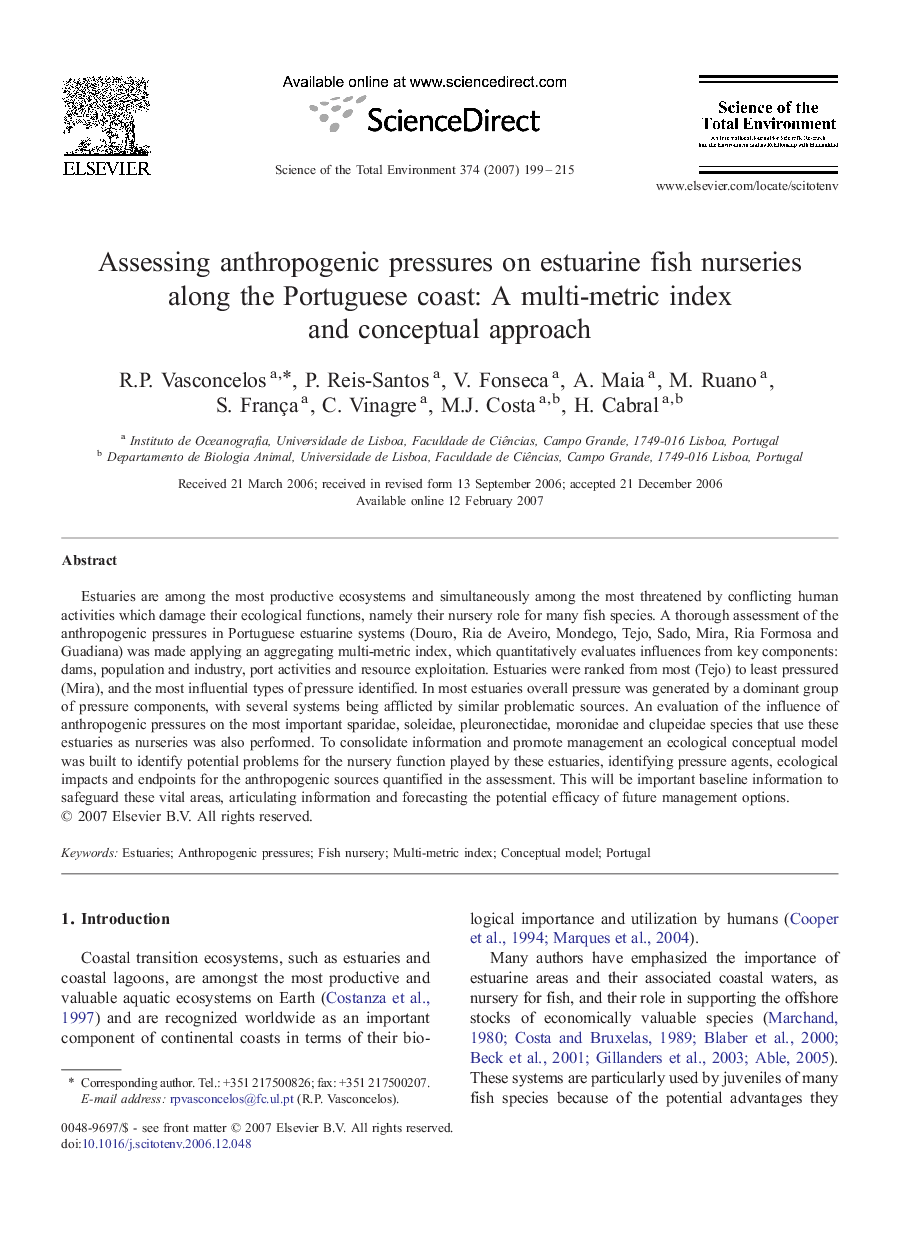| Article ID | Journal | Published Year | Pages | File Type |
|---|---|---|---|---|
| 4433633 | Science of The Total Environment | 2007 | 17 Pages |
Estuaries are among the most productive ecosystems and simultaneously among the most threatened by conflicting human activities which damage their ecological functions, namely their nursery role for many fish species. A thorough assessment of the anthropogenic pressures in Portuguese estuarine systems (Douro, Ria de Aveiro, Mondego, Tejo, Sado, Mira, Ria Formosa and Guadiana) was made applying an aggregating multi-metric index, which quantitatively evaluates influences from key components: dams, population and industry, port activities and resource exploitation. Estuaries were ranked from most (Tejo) to least pressured (Mira), and the most influential types of pressure identified. In most estuaries overall pressure was generated by a dominant group of pressure components, with several systems being afflicted by similar problematic sources. An evaluation of the influence of anthropogenic pressures on the most important sparidae, soleidae, pleuronectidae, moronidae and clupeidae species that use these estuaries as nurseries was also performed. To consolidate information and promote management an ecological conceptual model was built to identify potential problems for the nursery function played by these estuaries, identifying pressure agents, ecological impacts and endpoints for the anthropogenic sources quantified in the assessment. This will be important baseline information to safeguard these vital areas, articulating information and forecasting the potential efficacy of future management options.
